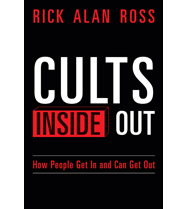Recognising coercive control: WA conference spotlights First Nations experiences with domestic violence
Published By admin
As Australia continues to grapple with alarmingly high rates of family and domestic violence, First Nations women and children remain disproportionately impacted.
The Hatchery’s Ending Coercive Control & Family Violence Conference will bring a national focus on distinct challenges faced by First Nations communities, hoping to drive meaningful progress in safeguarding those at risk.
From 28 to 29 October 2025, practitioners, advocates and experts will gather on Whadjuk Noongar Country to explore coercive control and drive systemic change. Topics include the potential criminalisation and the need for culturally safe responses across diverse communities, such as First Nations people.
According to a 2023 Australian Institute of Health and Welfare (AIHW) study, coercive control appears in 57% of family and domestic violence reports, underscoring its urgency in the national conversation on abuse.
The AIHW defines coercive control as a pattern of controlling behaviours used to establish and maintain control over another person. These behaviours can significantly affect someone’s mental and physical health, employment, relationships, financial security and sense of autonomy.
National Indigenous Times spoke with Kungarakan/Warramungu woman and upcoming conference speaker, Stephanie Monck, on understanding coercive control in the First Nations context.
Bringing nearly 21 years of experience as a lawyer, Ms Monck has spent the past five years working in the family and domestic violence space, including as Principal Legal Officer at both Women’s Legal Service WA and previously Aboriginal Family Legal Services.
Speaking on coercive control broadly, Ms Monck said, “What we find is often women downplay the violence they are experiencing because it’s not physical, and that’s the norm”.
However, in cultural contexts such as First Nations communities, coercive control often involves complex family and community dynamics which require culturally-safe responses:
“When we’re talking about coercive control, it’s not just a one-on-one thing always. In Indigenous families, it can be his whole family against her—so there’s more than one coercive controller in that situation,” Ms Monck said.
Proud Noongar woman, Alison Scott, also spoke with National Indigenous Times earlier this month on the unique context surrounding violence in First Nations communities.
“Lateral violence is the violence that happens in our community amongst us… that kind of violence comes from invasion and colonisation, and the purpose of it is to have communities fighting amongst themselves so that they don’t fight presence,” Ms Scott said.
“When you come home and you’re unsafe in those environments as well, and you’re challenged and you don’t get as much support from your community, that can be devastating as well, and take strength and power away from you when you need it most.”
Content retrieved from: https://nit.com.au/19-07-2025/19185/recognising-coercive-control-wa-conference-spotlights-first-nations-experiences-with-domestic-violence.






